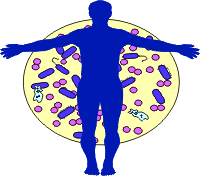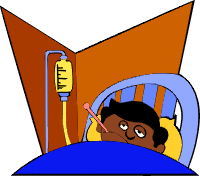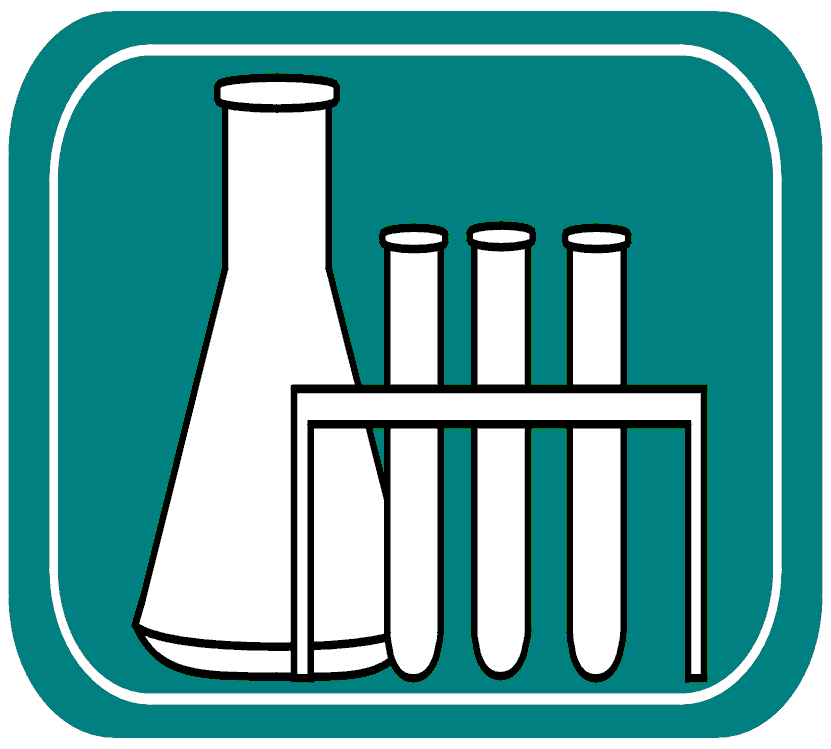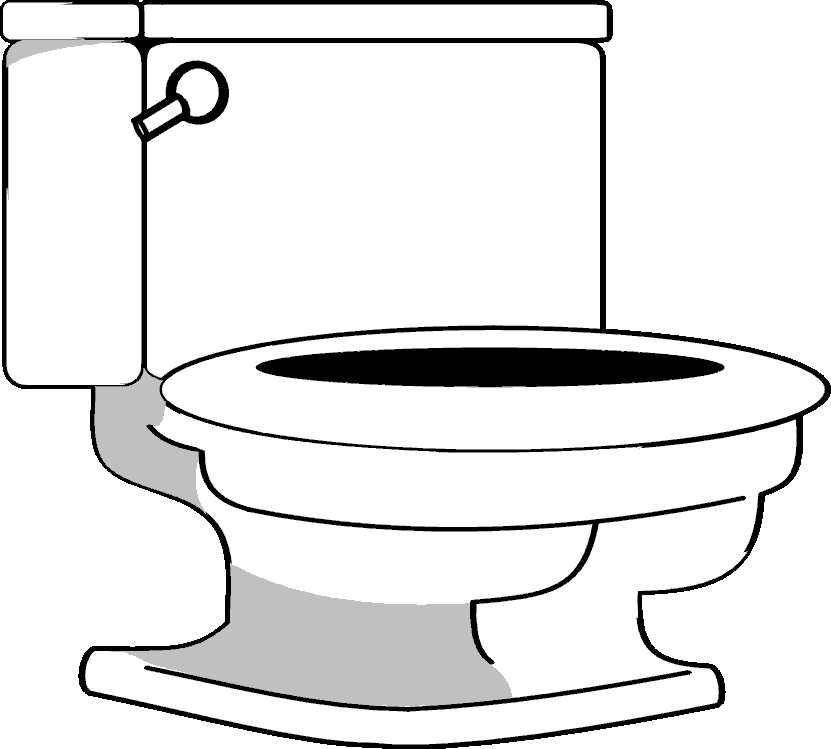 |
|
 |
|
TOTAL AND FECAL COLIFORM BACTERIA

The coliform bacteria group consists of several genera of bacteria belonging to the family enterobacteriaceae. These mostly harmless bacteria live in soil, water, and the digestive system of animals. Fecal coliform bacteria, which belong to this group, are present in large numbers in the feces and intestinal tracts of humans and other warm-blooded animals, and can enter water bodies from human and animal waste. If a large number of fecal coliform bacteria (over 200 colonies/100 milliliters (ml) of water sample) are found in water, it is possible that pathogenic (disease- or illness-causing) organisms are also present in the water. Fecal coliform by themselves are usually* not pathogenic; they are indicator organisms, which means they may indicate the presence of other pathogenic bacteria. Pathogens are typically present in such small amounts it is impractical monitor them directly.

Swimming in waters with high levels of fecal coliform bacteria increases the chance of developing illness (fever, nausea or stomach cramps) from pathogens entering the body through the mouth, nose, ears, or cuts in the skin. Diseases and illnesses that can be contracted in water with high fecal coliform counts include typhoid fever, hepatitis, gastroenteritis, dysentery and ear infections. Fecal coliform, like other bacteria, can usually be killed by boiling water or by treating it with chlorine. Washing thoroughly with soap after contact with contaminated water can also help prevent infections.
Fecal coliform, like other bacteria, can usually be killed by boiling water or by treating it with chlorine. Washing thoroughly with soap after contact with contaminated water can also help prevent infections.

Bacteria are single-celled organisms that can only be seen with the aid of a very powerful microscope. However, coliform bacteria form colonies as they multiply, which may grow large enough to be seen. By growing and counting colonies of coliform bacteria from a sample of water, it is possible to determine approximately how many bacteria were originally present.
There are several ways coliform bacteria are grown and measured. Methods commonly used include the most probable number (MPN) method and the membrane filter (MF) method.

In the MPN method, a "presumptive test" is performed first. A series of fermentation tubes that contain lauryl tryptose broth are inoculated with the water sample and incubated for 24 hours at 35 ° C. Fermentation tubes are arranged in 3 or more rows, with 5 or 10 tubes per row, with varying dilutions of the samples in the tubes. The fermentation tube contains an inverted tube to trap gases that are produced by the coliform bacteria. After 24 hours, the fermentation tube is examined for gas production. If there is no gas production, the samples are incubated for another 24 hours and reexamined. If gas production is observed by the end of 48 hours, the presumptive test is positive; coliform bacteria are present in the sample. A "confirmed test" is then performed to determine if fecal coliform bacteria are present. For the confirmed test, some of the content of the fermentation tube is transferred with a sterile loop to a fermentation tube containing another broth. The sample is incubated in a water bath at 44.5 ° C for 24 hours. Gas production in the fermentation tube after 24 hours is considered a positive reaction, indicating fecal coliform. Based on which dilutions showed positive for coliform and/or fecal coliform, a table of most probable numbers is used to estimate the coliform content of the sample. The results are reported as most probable number (MPN) of coliform per 100 ml (American Public Health Association, 1998).
The MF method is more rapid than the MPN method, but the results are not as reliable for samples that contain many non-coliform bacteria, high turbidity, and/or toxic substances such as metals or phenols. The water sample is filtered through a sterile membrane filter. The filter is transferred to a sterile petri dish and placed on a nutrient pad saturated with broth. The plates are inverted, placed in watertight plastic bags, and incubated in a water bath at 44.5 degrees C for 24 hours. Colonies produced by fecal coliform bacteria are blue, and are counted using a microscope or magnifying lens. The fecal coliform density is recorded as the number of organisms per 100 ml.
Sometimes the unit of colony producing units per 100 milliliters of water (CPU/100 ml) is used; this is equal to the number of organisms per 100 ml.
Factors Affecting
Fecal Coliform

Wastewater and Septic System Effluent
Fecal coliform is present in human waste, so the bacteria goes down the drains in our houses and businesses, and can enter streams from illegal or leaky sanitary sewer connections, poorly functioning septic systems, and poorly functioning wastewater treatment plant (WWTPs) effluent.
Animal Waste


A significant amount of fecal coliform is released in the wastes produced by animals. This can be a serious problem in waters near cattle feedlots, hog farms, dairies, and barnyards that have poor animal keeping practices and waste is not properly contained. In urban areas, fecal coliform can be contributed to surface water by dog, cat, raccoon, and human waste when it is carried into storm drains, creeks, and lakes during storms.
Sediment Load
High amounts of sediment are often related to high concentrations of pathogenic bacteria. The bacteria can attach to sediment particles, escaping invertebrate predators (Murdoch and Cheo, 1996). Fast-running water can carry more sediment, so higher levels of bacteria can occur during high runoff events. Bacteria are much more abundant on soils than in water.
Temperature
Bacteria grow faster at higher temperatures. The growth rate slows drastically at very low temperatures.
Nutrients
High levels of nutrients can increase the growth rate of bacteria.
Water Quality Standards Regarding Fecal Coliform
 The U.S. Environmental Protection Agency (EPA) requires all
drinking water systems to monitor for total coliforms in distribution
systems. The EPA states that no more than 5.0% of samples can test positive
for total coliform in a month. (For water systems that collect fewer than 40
routine samples per month, no more than one sample can be total
coliform-positive). Every sample that has total coliforms must be analyzed
for fecal coliforms. There cannot be any fecal coliforms in drinking water
(
U.S. EPA Office of Water
current drinking water standards
).
The U.S. Environmental Protection Agency (EPA) requires all
drinking water systems to monitor for total coliforms in distribution
systems. The EPA states that no more than 5.0% of samples can test positive
for total coliform in a month. (For water systems that collect fewer than 40
routine samples per month, no more than one sample can be total
coliform-positive). Every sample that has total coliforms must be analyzed
for fecal coliforms. There cannot be any fecal coliforms in drinking water
(
U.S. EPA Office of Water
current drinking water standards
).
For treated drinking water, Colorado Department of Public Health and Environment Water Quality Control Division (CDPHE-WQCD) regulations are similar to those of U.S. EPA; there cannot be any fecal coliform in treated drinking water (see CDPHE-WQCD Primary Drinking Water Regulations for more information).
For domestic water supply, CDPHE-WQCD regulations state that fecal coliform count shall not exceed 2000 fecal coliforms per 100 ml (based on geometric mean of representative samples) (see Reg. 31, Basic Standards and Methodologies for Surface Water ).
 CDPHE-WQCD
regulations
state that waters used for Class 1 primary contact (including
such activities as swimming, rafting, and kayaking) should not have fecal
coliform counts above 200 fecal coliforms per 100 ml. Waters used for Class
2 secondary contact (non-primary contact waters, including, but not limited
to, fishing and other streamside or lakeside recreation) should not have
fecal coliform counts above 2000 fecal coliforms per 100 ml.
CDPHE-WQCD
regulations
state that waters used for Class 1 primary contact (including
such activities as swimming, rafting, and kayaking) should not have fecal
coliform counts above 200 fecal coliforms per 100 ml. Waters used for Class
2 secondary contact (non-primary contact waters, including, but not limited
to, fishing and other streamside or lakeside recreation) should not have
fecal coliform counts above 2000 fecal coliforms per 100 ml.
Other Information About Fecal Coliform
The fecal coliform group includes all of the rod-shaped bacteria that are non-sporeforming, Gram-Negative , lactose-fermenting in 24 hours at 44.5 ° C, and which can grow with or without oxygen.
Fecal coliform is a type of fecal bacteria. Another type of fecal bacteria is Fecal Streptococcus . Fecal Streptococcus is a group of bacteria normally present in large numbers in the intestinal tracts of warm-blooded animals other than humans.
For information on how drinking water is treated to remove bacteria, see The City of Boulder's water quality fact sheet .
*Some strains of Escherichia coli , which are a type of fecal coliform, can cause intestinal illness. One such strain is E. coli O157:H7, which is found in the digestive tract of cattle. For more information on E.coli O157:H7 and other pathogenic bacteria, see the U.S. FDA Center for Food Safety & Applied Nutrition's "Bad Bug Book" .